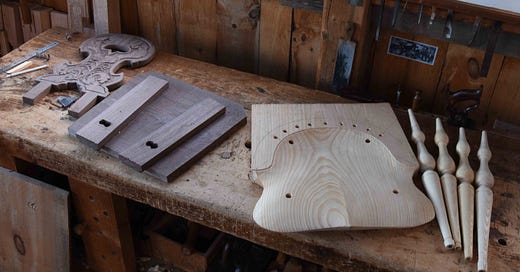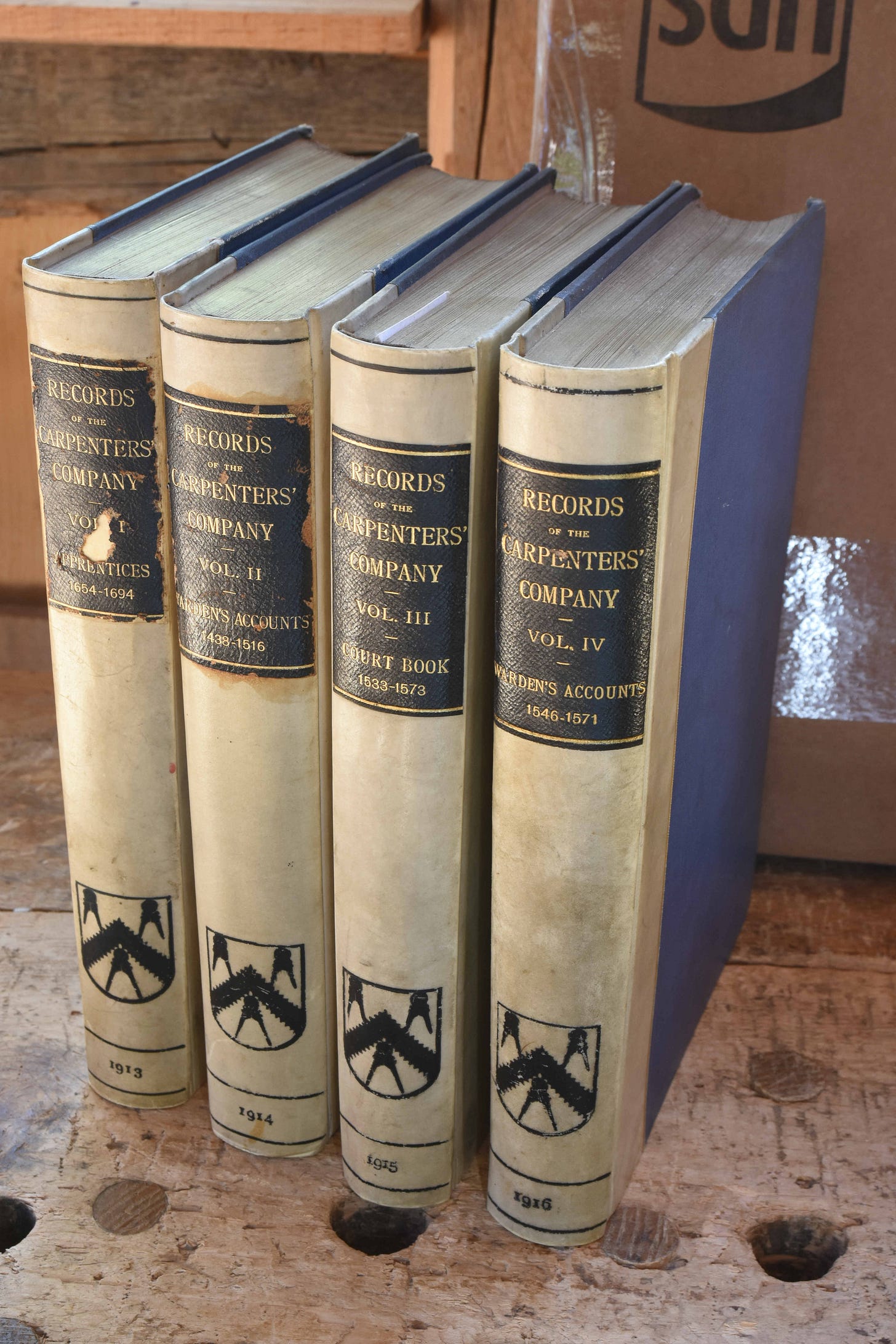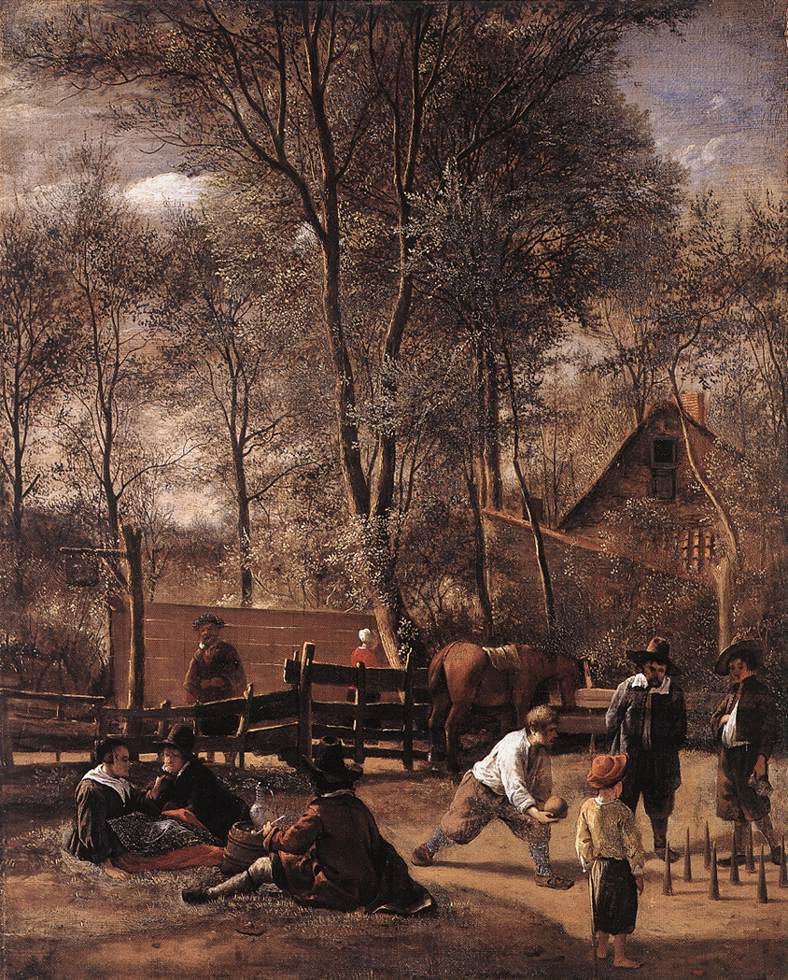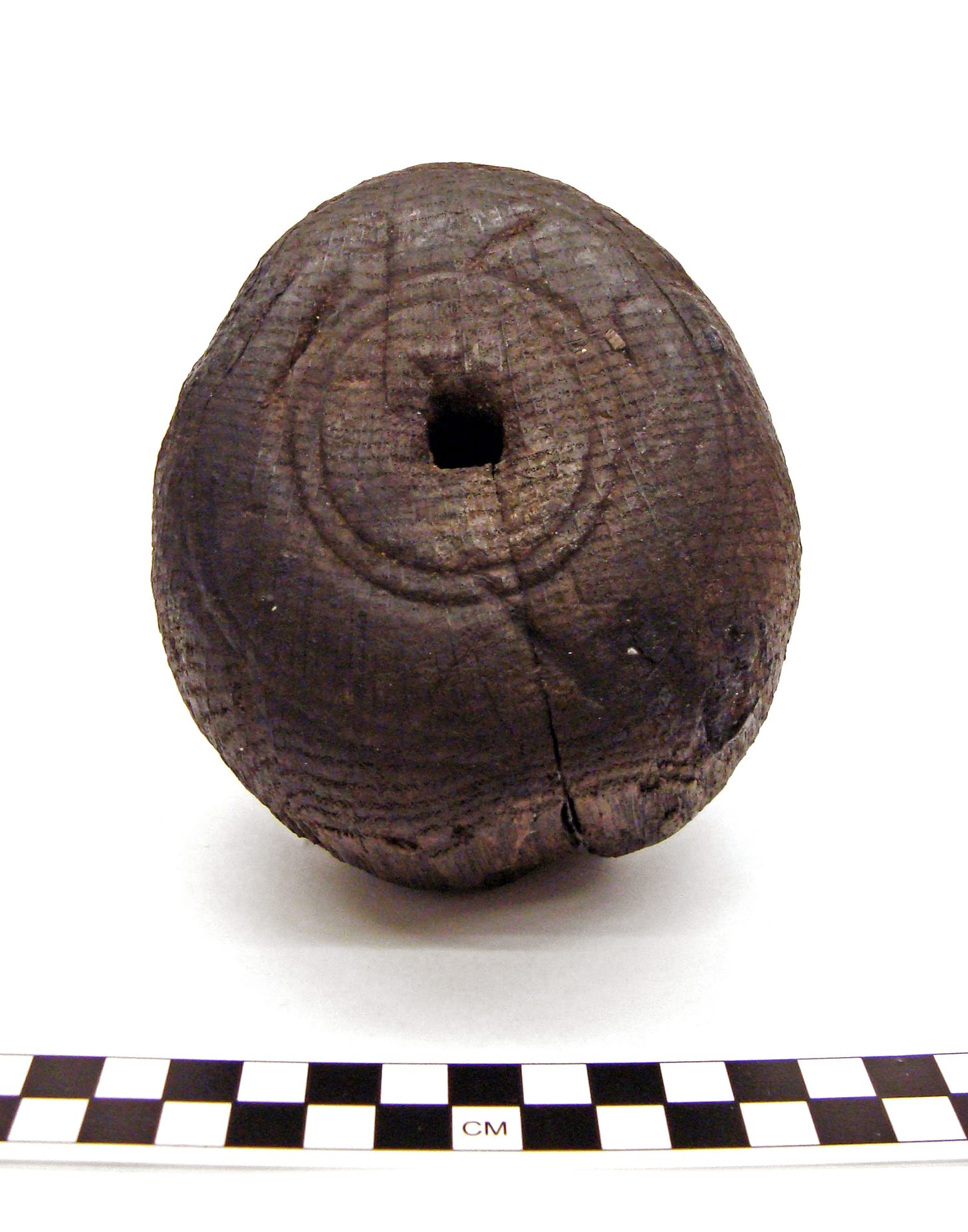[PF: I’ve been very distracted (in a good way) by my recent Windsor chair detour. But yesterday put it aside and went back to my brettstuhl - going to finish that so I can put the video together. Next post will be about the brettstuhl project. Meanwhile here is this week’s recycled post from my old blog, again free to all subscribers. More period records - this series could go on for ages…I find them fascinating. This one about a bowling alley at the Carpenters’ Company Hall in London and more.]
Many years ago, I bought a few volumes of the Records of the Worshipful Company of Carpenters. An extravagant purchase, but with some great details about their goings-on.
Here’s a snippet, I wrote a “translation” in parentheses to save you the trouble of deciphering the original:
Bower Marsh, editor, Records of the Worshipful Company of Carpenters, vol 4, Warden’s account book, 1546-1571
payd to Rychard burdn for iij plankes for the bowlyng ale xviijd (paid to Richard Burden for 3 planks for the bowling alley, 18 pence)
payd for iiij lode of funders yearthe & the caryag for the bowlyng ale vs vjd (paid for 4 loads of founders earth and the carriage for the bowling alley, 5 shillings, 6 pence)
payd to ij laborars for a day & di for caryeng owte of the funders yerthe in to the strett Redy for ye cartes & for caryeng yt in to or well yard xviijd
(paid to 2 laborers for a day & a half for carrying out of the fuller’s earth into the street ready for the carts & for carrying it in to our well yard – 17 pence)
payd for iiij lod of sope ahysses & the caryag iijs xd (paid for 4 loads of soap ashes and the carriage 3 shillings 10 pence)
payd for v busschelles of howse ahysses for the bowlyng ale xd (paid for 5 bushels of house ashes for the bowling alley 10 pence)
payd to ij men for the makyng of the bowlyng aly xxjs xjd (paid to 2 men for the making of the bowling alley 21 shillings 11 pence)
Randle Holme’s description of bowling, from 1688 is:
Bowling is a Game, or recreation which if moderately used very healthfull for the body, and would be much more commendable then it is, were it not for those swarms of Rooks, which so pester Bowling greens, where in three things are thrown away by such persons, besides the Bowls, viz: Tyme, Money, and Curses, and the last ten for one.
Seuerall places for Bowling.
First, Bowling greens, are open wide places made smooth and euen, these are generally palled or walled about.
Secondly, Bares, are open wide places on Mores or commons.
Thirdly, Bowling-alleys, are close places, set apart in made more for privett persons, than publick uses.
Fourthly, Table Bowling, this is, Tables of a good length in Halls or dineing roomes, on which for exercise and diuertisement gentlemen and their assosiates bowle with little round balls or bullets.
Here’s Jan Steen’s skittle players, not technically bowling. But what we in the US think of as bowling these days.
Randle Holme again, describing the types of bowls:
Several sorts of Bowles.
Where note in Bowling the chusing of the Bowls is the greatest cunning, for
Flat Bowles, are best for close Narrow alleys.
Round Byassed Bowles for open grounds of advantage.
Bowles as round as a ball for green swarths that are plain and Levell.
Chees-cake bowles, which are round and flat like cheeses.
Jack Bowles, little bowles cast forth to bowl att, of some termed a Block.
Studded Bowles, such as are sett full of pewter nayles, and are used to run at streight Markes.
Marvels, or round Ivory balls, used by gentlemen to play on long tables, or smooth board Romes.
I saw these bowlers during my trip to England a few years back. I think this was near Royal Leamington Spa
Here is a 17th-century bowling ball, found during Boston’s famous Big Dig - It’s a “Round Byassed Bowl” which is not technically round - it has flattish sides and lead filled the hole to cause is to roll with some “bias.”
Read about it here: http://www.sec.state.ma.us/mhc/mhcarchexhibitsonline/crossstreetbacklot.htm









Can you imagine a 16th century spelling bee? Interesting article about the bowling ball.